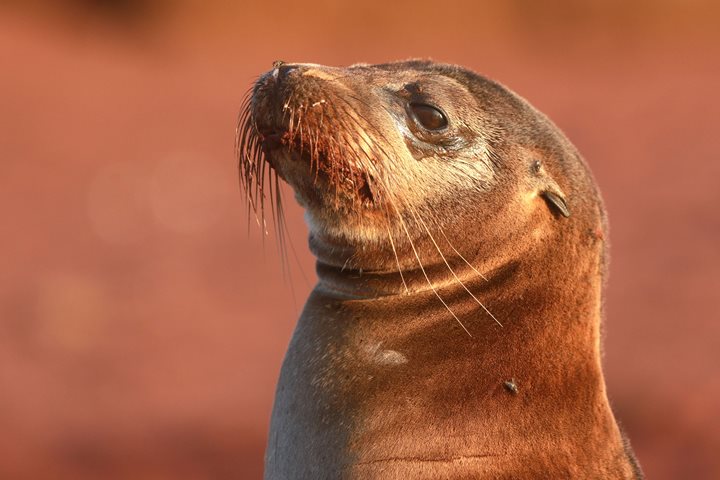Today we visited the island of San Cristobal. First, we visited the most eastern point of the Galapagos Archipelago: Punta Pitt. Here our guests enjoyed a nice Zodiac ride along the coast in order to observe sea birds like great frigatebirds and red-footed boobies among Galapagos sea lions, Nazca boobies, and Galapagos shearwaters. The second option was a hike. Here our guests were amazed by finding blue-footed boobies all along the trail. There was time for swimming and snorkeling off a green sandy beach covered by olivine crystals. The afternoon was spent at Cerro Brujo, considered to be one of the most beautiful beaches in the Galapagos Archipelago. The end for a perfect vacation at one of the most pristine places on Earth!
- Daily Expedition Reports
- 23 Mar 2019
Santa Cristobal Island, 3/23/2019, National Geographic Islander
- Aboard the National Geographic Islander
- Galápagos
Wilo Castaneda, Naturalist
Wilo was born and raised in the Galápagos Islands. From an early age, he was fascinated by outdoors activities, and excelled at basketball, cycling, swimming, and snorkeling. In 1999, he trained to become a Naturalist Guide for Galápagos National Par...
Read MoreShare Report
Related Reports
11/23/2022
Read
National Geographic Islander II
Isabela and Fernandina
Our day began with the chance to point out a lot of interesting geological features as we enjoyed Zodiac tours along a massive flank of Ecuador Volcano on Punta Vicente Roca. In the afternoon, we took a sunny walk on Punta Espinoza on Fernandina Island. We spotted many iguanas, and a bunch of sea lions hanging around, too.
11/22/2022
Read
National Geographic Islander II
North Seymour & Rabida Islands
Relatively small and low compared to neighboring Santa Cruz, North Seymour is located to the north of Baltra. The island is dry with predominantly low shrubs, like prickly pear cacti. The incense trees are bare during the dry season. Seabirds like frigatebirds and blue-footed boobies nest on the island, and sea lions rest on the sand when they are not fishing. Land and marine iguanas also live here. Rabida is in the middle of the archipelago and has a striking red sand beach. We observed a small colony of sea lions of all ages resting or nursing. Behind the beach, American flamingos nest in a brackish lagoon. This island is full of contrasts and wildlife that we enjoyed observing during this day of expedition.







